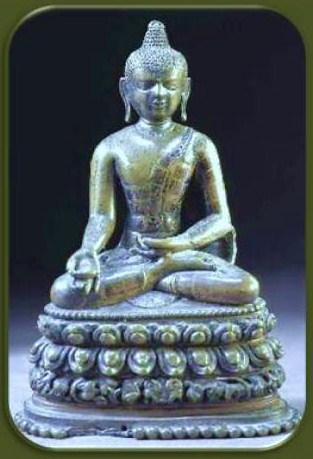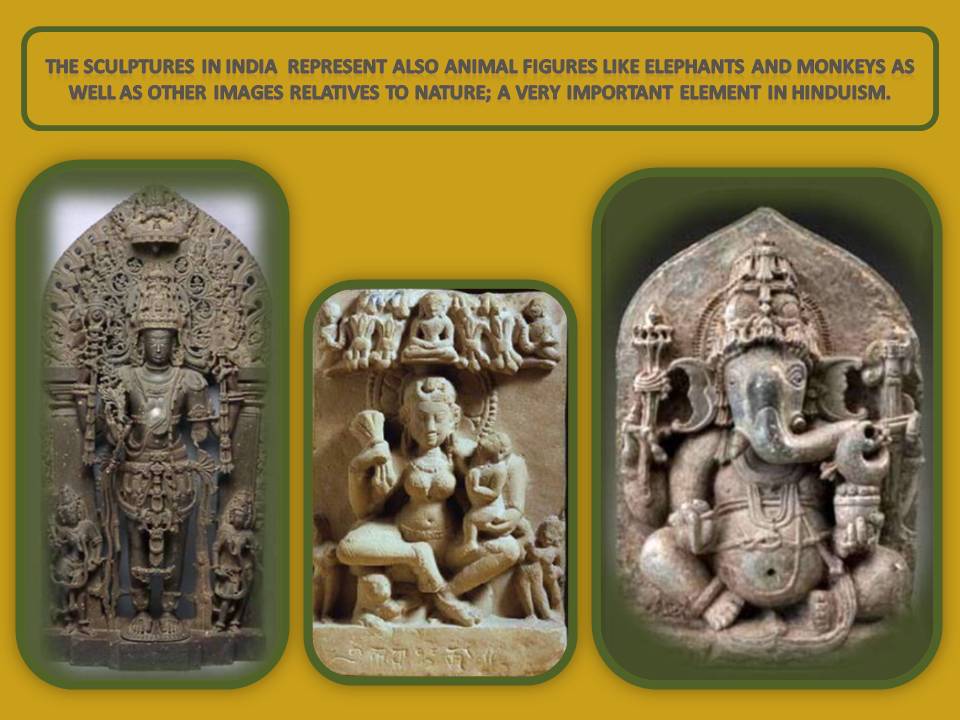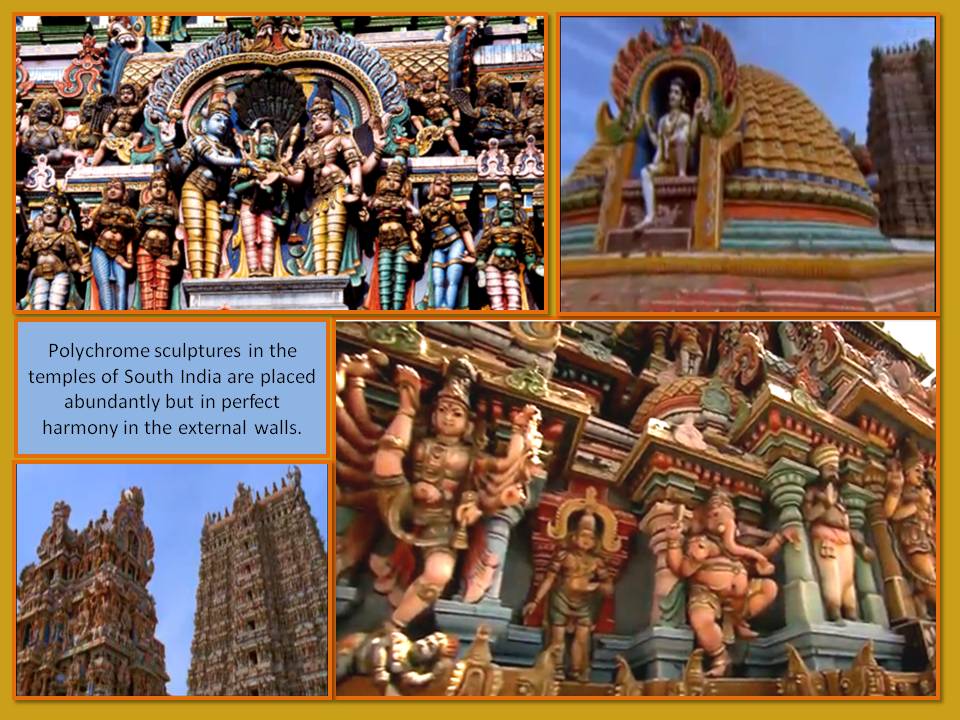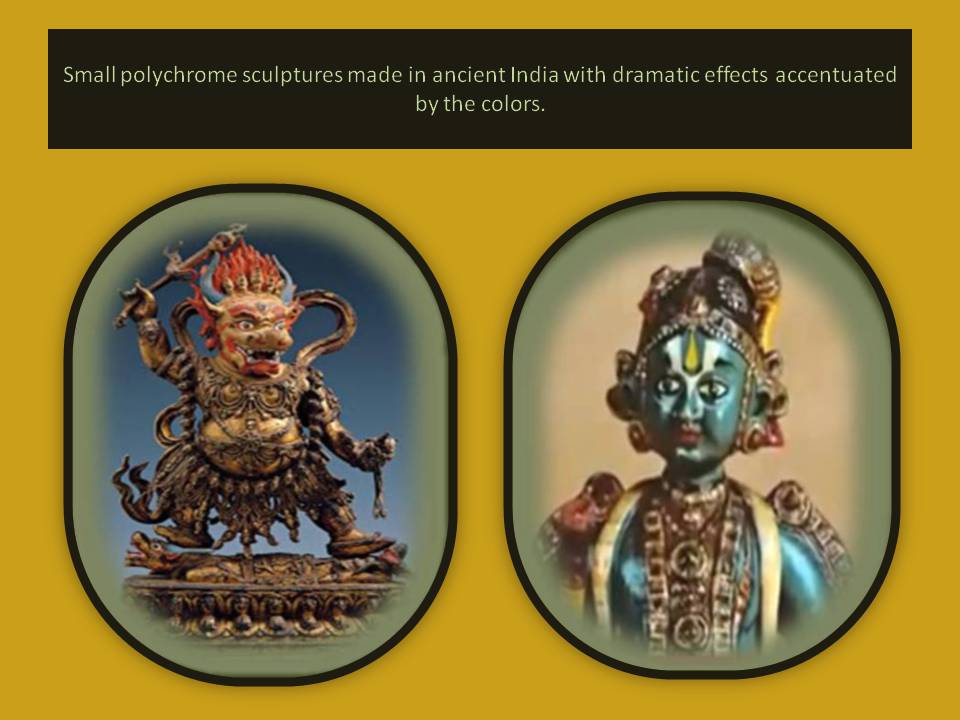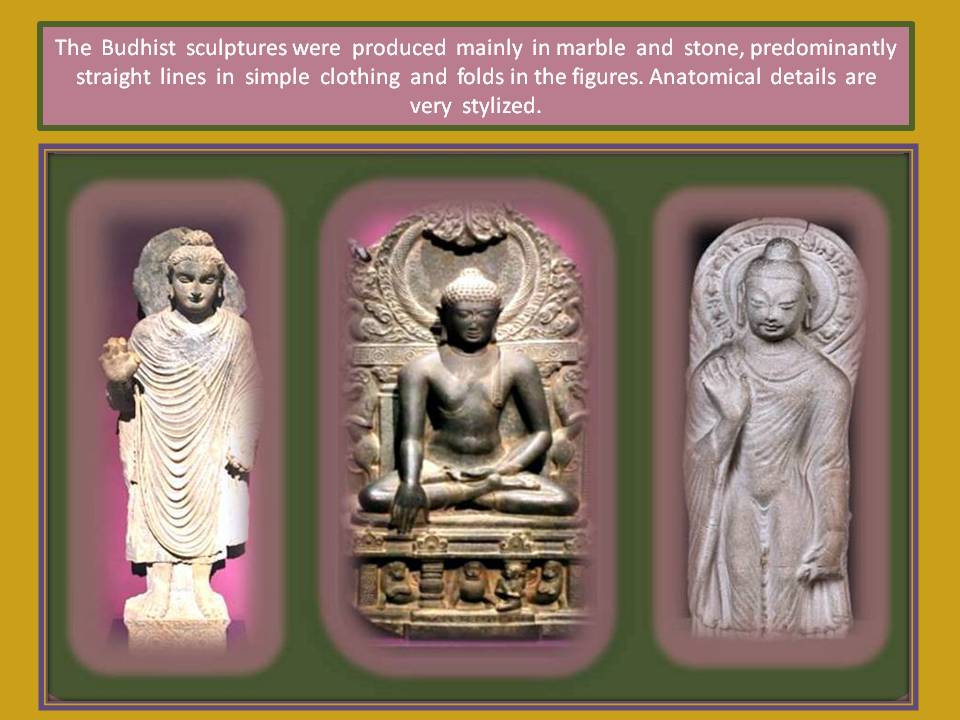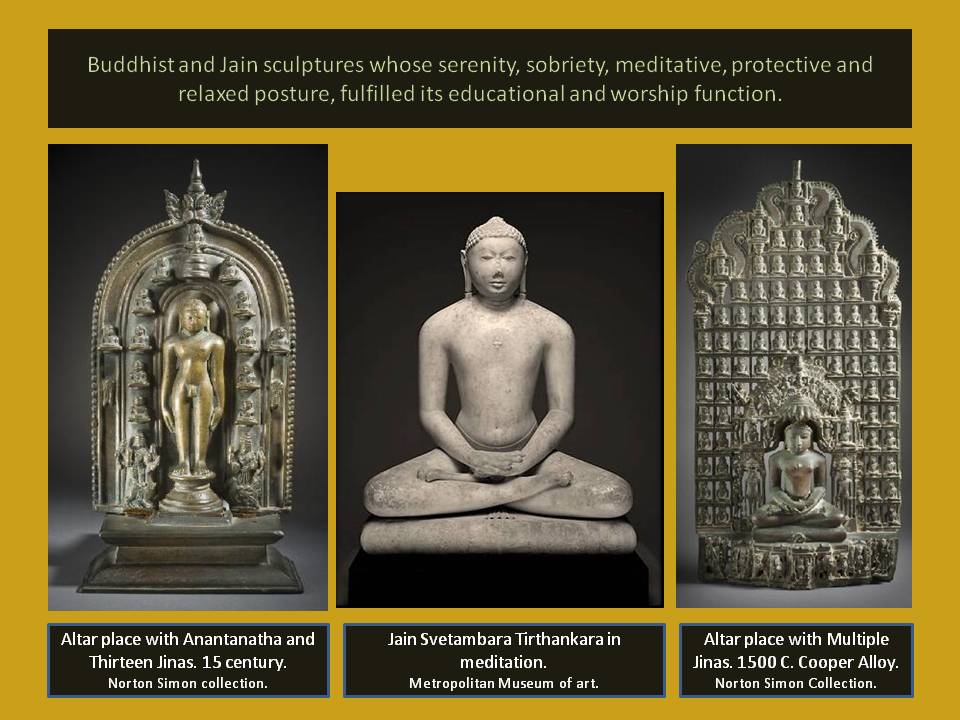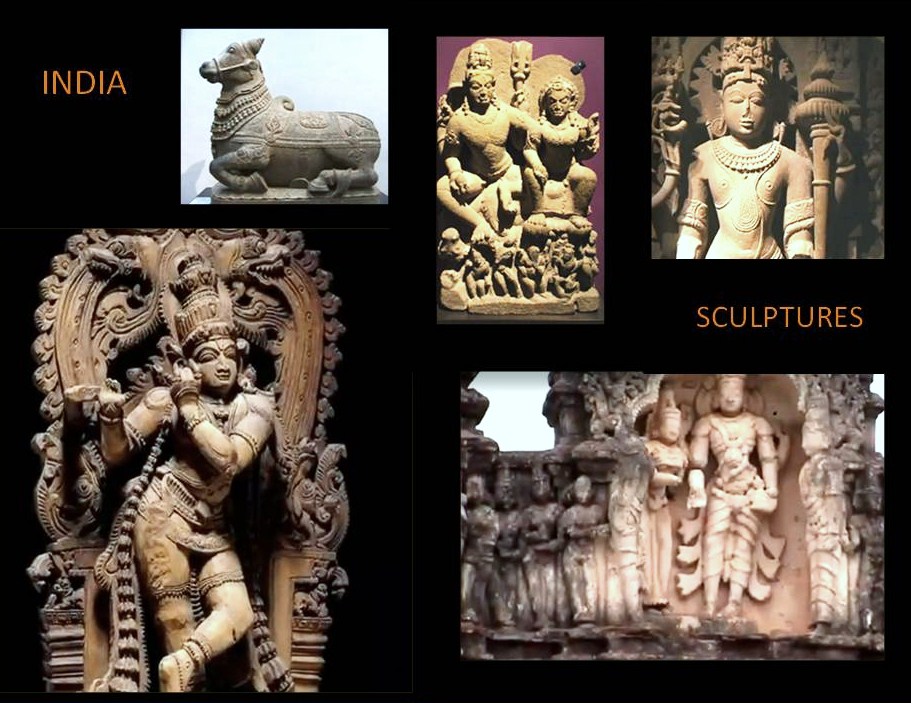Sculpture in India
Sculpture in India suitable the ideal medium to represent the image of gods and demigods and at the same time embodied in a tangible way their traditions, philosophical and religious beliefs with an artistic medium allowing to be appreciated from different visual angles. This feature of volume and mass that provides the three-dimensionality of sculpture is very useful not only to decorate temples and places of worship but also offer the advantage of those materials such as bronze that they could be loaded and displayed in the religious procession’s and be appreciated by believers who find an appropriate way to show their respects and worship their deities.
The characteristics of the physical composition of the materials witch this sculptures are made such as stone, marble, sandstone, clay and bronze among others, offers the possibility to be durable and preserve for the times been. They can be placed both in the outer areas of the temples as well as in the indoors space dedicated to the worship area. Many sculptures were preserved occulted in secret chambers to save them from the destruction that invaders enemy’s delivery, and only just recently were found; the majority of them in very good condition.
From the times of Dravidians and even more in the Vedic period religious sculptures were use with worship purpose to serve their sectarian and polytheist believe but these were not at that times as important or have the magnitude that religious sculpture rich with the Hinduism between the years 300 B.C. and 500 A.D. approximately.
Hinduism: polytheist and pantheistic religious believe, that God and the material world are the same thing and that God is present in all things; was also sectarian and promoter of personal worship but they do not promote sacrifices, rites and prayers made by a severe elite priestly caste that were far for been popular. With Hinduism this practices were reconsidered in a new light more approachable to the all the rage worshipers; been from that time until today the most popular and massive religious cult in India.
The sculptures in India perform in this transition a very important role to publicize the images corresponding to the new creed. To these most ancient Vedic deities, which personified forces of nature and the divine celestial world, was assigned new functions, other deities lost importance or disappeared, while some minor deities were elevated to religious prominence.
These sculptures are represented in possession of the attributes of the deity or semi deity and in the case of some of them holding in their hands elements related to moments or scenes from the legend that corresponds to them. To the Hindus who paid utmost attention to the cycles of the universe, new forms and names were assigned to the deities.
New forms and names assigned to the deities in Hinduism:
– Brahma, the creator.
– Vishnu, the preserver, who maintains the harmony and order.
– Shiva, the destroyer, who at annihilate of the universe it’s allow to be reborn in the next cosmic era.
Major sects of Hinduism:
– The Vaishnavismo.
– Shaivismo.
The Hindus offered their devotion in sculptures and other artistic media representing the deities who responded to these two sects been Vishnu and Shiva the two more important gods represented. All the temples both North and South in India were decorated on the outside and also internally. The shrines and chapels contained statues made of stone or bronze, dedicated entirely to the cult, and in the courtyards that bypass the temples several pavilions housed monumental effigies representing animals which have been gives divine connotation. Among these representations we find:
– The bull Nandin of Shiva.
– Vishnu Garuda bird.
– Wild boar Varaha, representation of Vishnu.
Sculptures showing multiples arms, contorted movements, pleasure in the forms of the body, some standing and other sit-ins have been preserved from some regions of the India. Others sculptures however belonging to different region are more contained and quiet, less contorted and devoid of movement or emotion. Both trends show the most relevant characteristics and philosophical concepts that represent each one with incredible detail and masterful technique allowing today identify the one who correspond to each region.
Polychrome sculptures in the temples of South India are placed abundantly but in perfect harmony in the external walls offering a set very beautiful and balanced despite the apparent clutter that leaves us speechless with the perfection of these sculptures. Bright colors, intense facial expressions, dynamism and sensuality in feminine forms of the figures represent the Joie de vivre of the Indian people. In those sculptures they are offering tribute to nature, their gods who protect them from the evil and injustice and in general to the harmony of the universe.
There were also made in ancient India small polychrome sculptures but just a few have been conserved.
In general on the sculptures in India, the male and female figures of the temples alternate with other animals such as monkeys, elephants, rhinos, birds, tigers and various other animals. In the medieval period numerous sculptures in the exterior walls of the temples contributed to effective propagate the religious messages to the worshipers.
Female representations prevail in earlier styles, with elegant and well-balanced forms in those figures, whose silhouette undulates gracefully as the tribhanga (triple Flex canonical). Are also well represented themes containing trivial daily events and divine matter.
Later the style varies a bit when the silhouettes lengthen and bodies representation become more sensual and voluptuous, female figures with breasts are emphasized more fillings, thinner waist, wider hips; and the features of the face are stylize and exaggerate, lengthening the tearing of the eyes. These changes occur approximately between the 11th to the 13th, which is added to the boom that acquires the realization of sculptures representing erotic groups.
The presence of these sculptures in the outer walls of the temples in Khajuraho seems to be due to the dominating influence of Kaulakapalika sects whose main objective was to achieve mystical union with the divine. This intention was translated into the realization of sexual intercourse between same sect insiders call mithuna by which groups of lovers are represented in sculptures in different positions suggested by the Kama sutra, but without being grotesque scenes, on the other hand it found fervent hugs, sensual contortions, loving expressions of affection. This is the way in which they believe they can best achieve this communication with the divine.
The figures and scenes have a great dynamism, realism and attention to detail of anatomical representation and postures that are almost hypnotizing to the viewer. This contrasts with the representation of worship’s images located in the shrines and chapels. In this case a more static, immutable representation of the sculptures can be apreciate as well of the frontality and rigidity of its attitude and gestures.
Buddhist and Jain religious sculpture representation.
As opposed to the sculptures of Hinduism are simple Buddhist and Jain sculptures whose serenity, sobriety, meditative protective and relaxed posture, fulfilled its educational and worship function in correspondence to the teachings of the creators of these religious sects. These sculptures were produced mainly in marble, predominantly straight lines in simple clothing and folds in the figures. Anatomical details are very stylized.
In the run-up to the first centuries and second B.C the figure of Buddha is never represent in his human form in sculpture. Until that time they represent the creator of this religion only by symbols. When they then start represent his figure was developed an extensive iconography in statuary in the teachings and passages about the life of Buddha. They were propagated mainly through sculpture representation, although in paintings and manuscripts as well. The Gupta period was in many ways a golden age of Indian history and culture, were took a big special place the sculpture . It saw an extraordinary florescence of all the arts this period, and the national genius was perhaps never more fully and typically expressed. Sculpture flourished, at Mathura and Sarnath as well as in the northern Deccan and at Ajanta and Ellora.
Unfortunately with the time many valuable sculptures were destroyed due to violent internal clashes and stages in history where the India was subjugated by foreign invaders who disregarded these symbols and culture. The same destruction occurred by the step of time mainly in the outside sculptures.
Sculpture in ancient India; play a fundamental role transmitting their history, culture and philosophical thought. Today is still appreciated by their high technical and artistic value for millions of people visiting every day its monuments.

